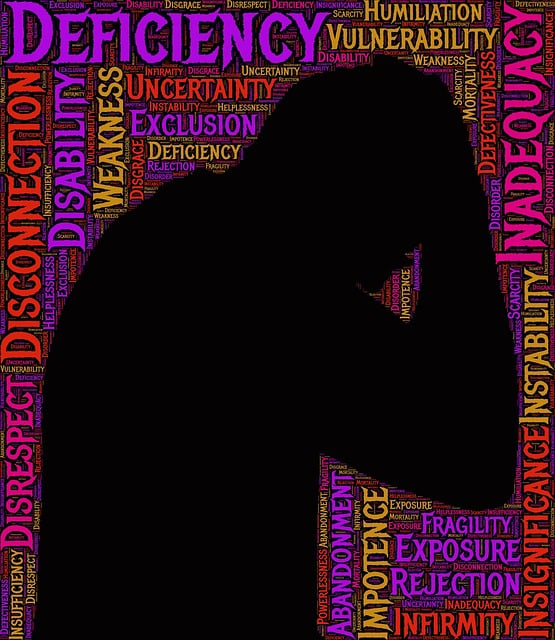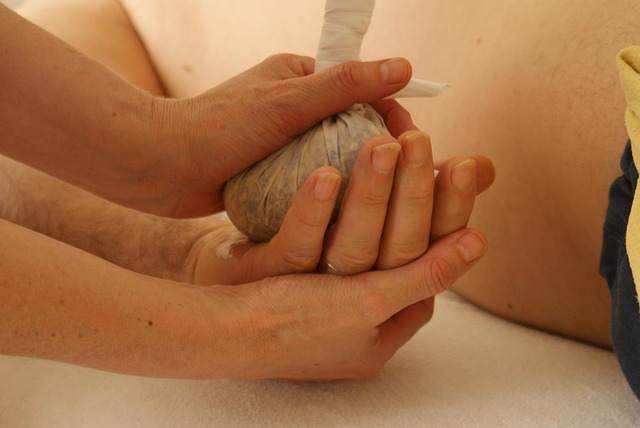Category: Physician Recovery Programs
Physician Recovery Programs: Revitalizing Healthcare Through Comprehensive Initiatives
Introduction
In an era where healthcare systems worldwide are under immense pressure, the concept of Physician Recovery Programs has emerged as a strategic solution to rejuvenate and sustain the well-being of medical professionals. These programs are designed to address the unique challenges faced by physicians, aiming to enhance their professional satisfaction, mental health, and overall resilience. This comprehensive article delves into the multifaceted world of Physician Recovery Programs, exploring their definition, global impact, economic implications, technological innovations, regulatory framework, challenges, and promising future prospects. By examining these aspects, we aim to provide valuable insights for healthcare stakeholders, policymakers, and researchers seeking to optimize physician well-being and, by extension, the quality of patient care.
Understanding Physician Recovery Programs: A Comprehensive Overview
Definition and Core Components
Physician Recovery Programs (PRPs) are structured initiatives that focus on supporting and revitalizing physicians by addressing various aspects of their professional and personal lives. These programs acknowledge the immense responsibilities and potential stressors associated with medical practice and aim to foster a culture of resilience and well-being. The core components typically include:
- Professional Development: Providing opportunities for continuous learning, skill enhancement, and exposure to innovative practices. This may involve workshops, mentorship programs, or research collaborations.
- Mental Health Support: Offering confidential counseling services, peer support groups, and stress management programs to address the unique mental health challenges faced by physicians.
- Work-Life Balance: Encouraging a healthy balance between professional and personal commitments through flexible work arrangements, wellness promotions, and family-oriented benefits.
- Community Building: Fostering a sense of belonging and connection among physicians through social events, networking opportunities, and collaborative platforms.
- Wellness Initiatives: Promoting physical and mental health through fitness programs, nutrition guidance, mindfulness practices, and access to wellness resources.
Historical Context and Significance
The concept of PRPs has evolved over the past few decades in response to increasing concerns about physician burnout and job satisfaction. Early recognition of the issue led to the development of pilot programs focused on improving work-life balance and professional development. These initial efforts laid the foundation for more comprehensive initiatives that now encompass a holistic approach to physician well-being.
The significance of PRPs lies in its potential to mitigate the severe consequences of physician burnout, which can result in decreased patient satisfaction, reduced clinical performance, and increased healthcare costs. By addressing these issues proactively, PRPs contribute to a healthier, more engaged physician workforce, ultimately enhancing the quality and accessibility of healthcare services.
Global Impact and Trends Shaping Physician Recovery Programs
International Influence and Regional Variations
The impact of Physician Recovery Programs is not limited to a single region, as countries worldwide have recognized the need for such initiatives. However, the implementation and emphasis on various aspects of PRPs vary significantly across regions, influenced by cultural, economic, and healthcare system differences:
- North America: The United States and Canada have seen substantial growth in PRP initiatives, with many medical institutions and professional organizations investing in comprehensive programs. These often include robust mental health support, well-defined career development paths, and innovative technology adoption.
- Europe: European countries have embraced PRPs, tailoring them to their unique healthcare systems. The emphasis is often on work-life balance, with flexible work arrangements and parental leave policies being widely adopted. Additionally, Europe has seen the rise of regional collaboration in PRP design and implementation.
- Asia: Countries like Japan, South Korea, and Singapore have implemented PRPs, focusing on mental health awareness and support. These programs often integrate traditional wellness practices with modern psychological services.
- Low-Middle Income Countries: In some developing nations, PRPs are emerging, often driven by non-profit organizations and international collaborations. These initiatives face challenges related to resource allocation and cultural sensitivity.
Key Global Trends
Several trends are shaping the future of Physician Recovery Programs:
- Personalized Support: There is a growing trend towards tailored recovery plans that consider individual physician needs and preferences, leveraging technology for personalized mental health interventions and career development resources.
- Digital Integration: The adoption of digital platforms and tools allows for accessible and remote support, enabling physicians to engage in wellness activities and access resources conveniently.
- Collaboration and Networking: Global collaborations between healthcare institutions and professional bodies facilitate the sharing of best practices and successful PRP models, fostering a more unified approach.
- Mental Health Awareness: Increasing awareness about mental health issues among physicians has led to more open discussions and expanded access to specialized support services.
Economic Considerations: Market Dynamics and Investments in Physician Recovery Programs
Market Analysis
The global healthcare market, valued at USD 8.6 trillion in 2020 (as per a report by Grand View Research), presents a significant opportunity for Physician Recovery Program providers and investors. The demand for such programs is driven by the growing recognition of physician well-being as a critical component of healthcare system resilience. This trend is further amplified by increasing healthcare costs, rising patient expectations, and the impact of COVID-19 on healthcare worker morale.
Investment Patterns and ROI
Investments in PRPs are gaining traction, with both public and private entities recognizing their long-term benefits. Hospitals, healthcare networks, and insurance companies are allocating funds to develop and enhance PRP offerings, expecting positive returns in the form of:
- Improved Physician Retention: Enhanced well-being initiatives can lead to higher job satisfaction and loyalty, reducing physician turnover rates.
- Increased Clinical Efficiency: Better mental health and work-life balance contribute to improved focus and productivity among physicians.
- Reduced Healthcare Costs: Addressing burnout can decrease absenteeism, medical errors, and unnecessary healthcare utilization.
- Enhanced Patient Outcomes: Resilient and engaged physicians are more likely to provide high-quality care, potentially leading to better patient outcomes and increased patient satisfaction.
Technological Advancements: Digital Tools for Physician Recovery Programs
Innovations in PRP Delivery
Technology plays a pivotal role in modernizing Physician Recovery Program delivery, making services more accessible and engaging. Here are some significant technological advancements:
- Telehealth Platforms: These enable remote counseling sessions, virtual support groups, and online mental health resources, expanding access to care, especially in underserved areas.
- Mobile Health (mHealth) Apps: Customized apps offer personalized wellness programs, mood tracking, meditation guides, and access to peer networks, allowing physicians to engage with PRP content on their own terms.
- Artificial Intelligence (AI): AI-powered tools can analyze large datasets to identify patterns of physician stress, predict burnout risks, and deliver tailored interventions.
- Virtual Reality (VR) and Augmented Reality (AR): Immersive technologies are used for relaxation exercises, mindfulness training, and even virtual team-building activities, providing unique and engaging wellness experiences.
- Data Analytics: Advanced analytics help assess the effectiveness of PRPs by tracking participation rates, measuring mental health indicators, and evaluating program impact on clinical performance.
Future Potential and Challenges
The future of technology in PRPs holds immense promise, but challenges remain:
- Digital Divide: Ensuring equitable access to digital tools is crucial, as technological advancements might perpetuate existing disparities if not implemented thoughtfully.
- Data Privacy and Security: As PRP programs collect sensitive data, robust security measures and ethical data handling practices are essential to protect physician privacy.
- Integration with Existing Systems: Seamless integration of new technologies with existing healthcare infrastructure is necessary for widespread adoption and optimal utilization.
- Personalization and Scalability: Balancing the need for personalized experiences while maintaining scalability to reach a larger physician population is a key challenge.
Policy and Regulation: Shaping the Landscape of Physician Recovery Programs
Key Policies and Legislative Frameworks
Physician Recovery Programs operate within a regulatory environment that varies across jurisdictions, influencing program design and delivery. Several factors shape this landscape:
- Healthcare Regulations: Existing healthcare regulations often provide a framework for PRPs, addressing issues like work hours, patient safety, and professional conduct. These regulations can either facilitate or hinder the implementation of comprehensive PRP initiatives.
- Occupational Health and Safety: Occupational health policies emphasize the well-being of workers, including physicians, and can include provisions for stress management, mental health support, and work-life balance.
- Medical Licensing and Professional Organizations: Medical licensing boards and professional organizations often provide guidelines and resources related to physician wellness, influencing PRP development.
- Government Initiatives: Many countries have launched national campaigns or programs focused on healthcare worker well-being, offering opportunities for collaboration and resource allocation.
Impact of Regulations on PRP Development
Regulatory frameworks can either promote or restrict the growth and innovation of Physician Recovery Programs:
- Enabling Policies: Favorable regulations provide an enabling environment by encouraging institutions to prioritize physician well-being, facilitating program implementation, and promoting collaboration.
- Compliance Challenges: Burdensome regulations may hinder PRP development by increasing operational costs and administrative burdens, especially for smaller healthcare organizations.
- Standardization vs. Customization: Regulatory standards can ensure minimum acceptable practices but might limit customization to meet local needs and cultural contexts.
Challenges and Criticisms: Overcoming Barriers to Effective Physician Recovery Programs
Identifying Main Challenges
Despite their potential benefits, Physician Recovery Programs face several challenges that hinder their effectiveness:
- Resource Allocation: Securing adequate funding and resources is a significant barrier, particularly in resource-constrained healthcare settings. This includes financial investments, staff time, and technology infrastructure.
- Cultural Stigma: In many cultures, discussing mental health issues and seeking support still carries a stigma, which can deter physicians from actively participating in PRPs.
- Time Constraints: Demanding clinical schedules leave little time for additional programs or activities, making it challenging to integrate PRPs into busy physician routines.
- Lack of Standardization: The absence of standardized PRP models and measurement tools makes it difficult to evaluate program success and share best practices across institutions.
- Resistance to Change: Implementing new initiatives may face resistance from physicians who are accustomed to traditional approaches or may be skeptical of the benefits.
Strategies for Overcoming Challenges
Addressing these challenges requires a multi-faceted approach:
- Partnerships and Collaboration: Building partnerships between healthcare institutions, government bodies, and professional organizations can leverage resources, expertise, and reach to enhance PRP development and implementation.
- Targeted Resource Allocation: Prioritizing PRPs within healthcare budgets and exploring creative funding sources can ensure the necessary investments.
- Mental Health Awareness Campaigns: Reducing stigma through awareness campaigns and educational initiatives encourages open discussions about well-being and fosters a supportive culture.
- Integrated Program Design: Designing PRPs that complement clinical responsibilities, considering time constraints, and providing flexible participation options can increase engagement.
- Standardization and Research: Developing standardized tools for program evaluation and research collaborations enable evidence-based practice and facilitate knowledge sharing.
Case Studies: Real-World Success Stories of Physician Recovery Programs
Example 1: Enhancing Well-being Through Integrated Initiatives (Hospital X, USA)
Hospital X implemented a comprehensive PRP that integrated professional development, mental health support, and work-life balance initiatives. The program included:
- Weekly Mental Health Sessions: Confidential counseling sessions led by trained professionals, with specialized support for burnout prevention.
- Peer Support Groups: Monthly meetings facilitated by peers to share experiences, provide social connection, and offer emotional support.
- Flexible Work Arrangements: Physicians could select flexible work schedules, compressive workweeks, or remote work options, promoting a healthier work-life balance.
- Professional Development Workshops: Regular workshops focused on clinical skills enhancement, leadership training, and research opportunities, fostering professional growth.
Impact: The program led to a 25% reduction in physician burnout rates over two years, improved job satisfaction scores, and increased retention rates, saving the hospital an estimated USD 1.5 million in turnover costs.
Example 2: Digital Platform for Global Connection (International PRP Network)
An international collaboration launched a digital platform to connect physicians worldwide, offering access to peer support, wellness resources, and professional development opportunities. The platform includes:
- Online Support Groups: Virtual spaces for physicians to share experiences, offer encouragement, and gain insights from peers across different cultures.
- Mental Health Resources: Access to online counseling sessions, meditation guides, and stress management tools tailored to diverse cultural needs.
- Professional Development Library: A digital library with webinars, podcasts, and articles covering various medical topics, enabling continuous learning.
- Global Events: Virtual conferences and social events foster connections and create a sense of global community among participating physicians.
Outcomes: The platform has seen over 50,000 registered users from 150 countries in its first year, leading to improved mental health awareness, reduced isolation feelings, and enhanced professional networks among participants.
Future Prospects: Emerging Trends and Strategic Considerations for Physician Recovery Programs
Potential Growth Areas
The future of Physician Recovery Programs holds exciting opportunities:
- Personalized Wellness Ecosystems: Advancements in technology will enable tailored wellness programs that adapt to individual needs, preferences, and cultural backgrounds.
- Virtual Reality for Training: Immersive VR technologies will revolutionize professional development by creating realistic simulation scenarios for skill enhancement.
- Global Collaboration Platforms: Digital platforms facilitating international collaboration will continue to grow, providing access to diverse perspectives and best practices.
- AI-Powered Support: AI chatbots and virtual assistants will offer immediate, personalized support, while AI analytics will enhance program evaluation and refinement.
Emerging Trends to Watch
Several emerging trends shape the future landscape:
- Holistic Wellness Approach: PRPs are evolving to include broader wellness aspects, such as nutrition, fitness, and mindfulness practices, recognizing their impact on overall health.
- Community Engagement: Programs increasingly involve local communities in wellness initiatives, fostering a sense of belonging and social responsibility among physicians.
- Wellness for Early Career Physicians: More focus is being placed on supporting new physicians through PRPs, addressing challenges unique to early careers.
- Interprofessional Collaboration: Encouraging collaboration between physicians and other healthcare professionals enhances team well-being and patient care.
Strategic Considerations
To capitalize on these trends and ensure effective PRP development:
- Adaptability: Programs must be flexible and adaptable to changing healthcare landscapes, technological advancements, and cultural nuances.
- Multi-Disciplinary Approach: Collaboration between healthcare professionals, researchers, technology experts, and policymakers is essential for comprehensive and innovative solutions.
- Continuous Evaluation: Regular program assessment and refinement based on data and feedback ensure ongoing relevance and effectiveness.
- Community Integration: Engaging local communities and stakeholders can enhance program reach, sustainability, and cultural sensitivity.
Conclusion: Investing in Physician Recovery for Optimal Healthcare Delivery
Physician Recovery Programs are not merely perks but essential investments in the healthcare workforce. The challenges are significant, but the potential benefits to physicians, patients, and the healthcare system as a whole are substantial. By addressing barriers, adopting innovative solutions, and leveraging technological advancements, healthcare leaders can create sustainable PRPs that improve well-being, enhance clinical performance, and ultimately benefit patients.
As the healthcare landscape continues to evolve, prioritizing physician recovery will remain crucial in ensuring high-quality care and fostering a resilient healthcare workforce. This comprehensive exploration of Physician Recovery Programs provides insights into their potential, challenges, and future directions, offering guidance for those seeking to enhance the well-being of healthcare providers worldwide.
Luxury Rehab for Physicians: Addressing Burnout & Addiction for Longevity

Physicians and healthcare workers face high rates of burnout, stress, and addiction due to traumatic…….
Luxury Rehabilitation: Targeted Support for Physician Addiction Treatment

Physicians face unique stressors in their high-pressure careers, leading to potential addiction. Spe…….
Luxury Programs for Physician Addiction Recovery: Holistic Support for Healthcare Heroes

Physician addiction treatment programs address unique challenges faced by healthcare professionals,…….
Revitalize Healthcare Professionals: Luxury Doctor Rehab Programs for Well-being

In response to burnout and stress among healthcare professionals, doctor rehab programs provide spec…….
Luxury Rehabilitation: Tailored Support for Physician Addiction Treatment

The medical community recognizes the growing issue of physician addiction, fueled by high-stress wor…….
Rehabilitating Healthcare Heroes: Specialized Programs for Physician Addiction Treatment

Physician addiction treatment programs address the unique challenges faced by healthcare professiona…….
Tailored Healing: Specialized Programs for Physician Addiction Treatment
Luxury Programs for Physicians: Addressing Addiction, Promoting Healing

Physicians and healthcare workers face unique challenges leading to stress, burnout, and addiction……..
Revitalize Healthcare: Unveiling Transformative Doctor Rehab Programs

In response to the high rates of stress, burnout, and substance abuse among healthcare workers, doct…….

